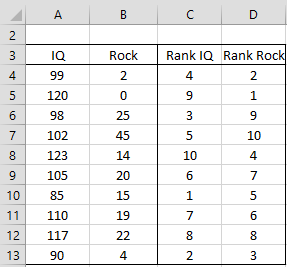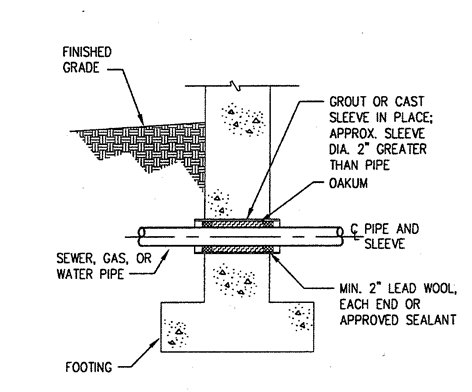Understanding What Your Startups Burn Rate Really Means Silicon Valley Bank

Your startup’s cash burn rate is one of the most important metrics to get right. When you need to make a big change like this, you’re operating a lot like a new business. You need to know how long you have to develop and test ways to increase revenue before the bank’s money runs out. You also need to budget for interest payments once you do start making a profit again.

Net burn rate, on the other hand, tells you how much money you’re spending per month, but includes revenue in the equation. At the most basic, burn rate is a measure of negative cash flow (how much money you’re losing each month). For example, if your startup spends $10,000 every month on office space, computers, and wages, but sales only amount to $8,000 in that same month, then your burn rate is $2,000 ($10,000 – $8,000). Potential investors might prefer to use a different gross burn rate or net burn rate calculation, which only takes into account operating expenses. For the purposes of managing your small business, though, the calculation presented above will give you the information you need to help you manage your cash flow.
How to Calculate Burn Rate?
It helps you see if you need to change your current cost-to-income ratio by pursuing new fundraising opportunities or cutting costs. Conversely, it lets you know if you have extra cash to reinvest in your company to increase marketing efforts or improve product development. Calculating cash burn rate is crucial for established companies and startups. It assists in forecasting future investments and identifies minimum income or loan amounts required to offset expenses. In this case, you divide your operating income (revenue minus operating expenses) by the amount of cash initially invested in the business.
But until customers actually start making purchases, you’re spending money on ads and web hosting but not earning any to pay for it. Typically, when people say “burn rate” they’re referring to the net burn rate calculation. It’s a more critical figure with an important distinction because it considers not only the business’s cash spend rate but also how much revenue the business generates. If you are a pre-revenue startup, you need to consider how much money you are spending to improve your burn rate. This is especially important to track when your revenue is down, as a loss in revenue without any change in spending will result in a higher burn rate for that time period.
How to calculate startup runway using net burn rate
There is a high likelihood that it will enter a state of financial distress. Considering the set amount of funding, investors may need to set more aggressive deadlines for revenue realization. Alternatively, it may mean investing more money into a company in order to extend the time it takes to reach profitability and realize revenue.

While we suggest tracking net burn rate (it’s alway what we report on in Finmark), it’s worth noting the difference between the two. If you’ve heard the phrase “burning cash,” then you likely already understand what burn rate means. There would be no way to keep your burn rate low if you leased and retrofitted a building on your own. Instead of leasing your own building, opt for coworking space from Bond Collective. That is called your “runway.” Think of it as how much room you have to become profitable before your business fails.
Related metrics
It is also crucial that companies enter into agreements that offer flexibility to scale up or down as required. Avoid for instance, minimum lease terms or specific conditions that are typically off balance sheet but would result in commitments in cash payments down the line. One aspect to consider under the cash basis, however, is the timing of “cash-ins” and “cash-outs” and whether reporting a monthly burn rate makes sense. For instance, a small company would typically make VAT payments, or prepay corporation tax on a quarterly basis.
Shiba Doubles Their Burn Rate, InQubeta’s Innovative Approach to … – Finbold – Finance in Bold
Shiba Doubles Their Burn Rate, InQubeta’s Innovative Approach to ….
Posted: Tue, 15 Aug 2023 16:00:00 GMT [source]
It’s equal to your Net Income on the P&L statement, and usually stated monthly. To calculate it from scratch, add all expenses for the month and subtract all income for the month. If you’ve spent $500k this month, and brought in $250k in cash income, your monthly burn rate is $250k.
How to calculate net burn rate
Note that this cash income needs to actually be in your hand – not deferred revenue from future bookings. Although it can be uncomfortable to admit that you have a high Burn rate (and a limited cash runway), it is far better to address these metrics before they become a problem. Burn rate isn’t the only important metric companies need to keep an eye on there is a wide range of financial KPIs. For this, you need a good analytics dashboard that can display them at a glance, give you actionable insights and can be used by everyone in your organization.

You’ll typically want a negative cash burn rate because it means you’re accumulating cash instead of depleting it. But there are scenarios where investing money aggressively in growth makes sense. Beware that including VC-funding in your cash burn rate calculation does not always give you a realistic view of how much money is being spent/lost, and may lead to cash burn issues down the line. If your monthly expenses like office space, internet, and web hosting are high, you’ll struggle to cut down your burn rate.
Here’s what you need to know about burn rates, including what they are and why they matter — and how to calculate yours and determine if it’s where it should be. Burn rate is the amount of money your business needs in a certain period—usually a month—to cover all expenses. In other words, burn rate tells you how quickly your business “burns through” capital. As I mentioned, most entrepreneurs and experts recommend having at least twelve months of runway at all times. That means a good burn rate is around one-twelfth of your available cash.
The takeaway here is that burn rate is the amount of cash a company spends each month. A company’s burn rate should be examined and compared to its current cash balance in order to get an idea of how long it can survive. The lower the burn rate, the longer a company has to grow before it needs more capital. Gross burn rate is helpful if you’re focused on measuring operating expenses—for instance, if you’re looking for ways to cut back spending in your company. Net burn rate is useful if you want to measure profit growth since it shows how much you’ve earned versus how much you’ve spent.
Determining your net burn rate then involves subtracting your income from those monthly expenses. It also gives them an idea of what it will take for the business to become profitable. Investors measure burn rate against future revenues to gauge if your startup is a worthwhile investment. A company can project an increase in growth that improves its economies of scale. This allows it to cover its fixed expenses, such as overhead and R&D, to improve its financial situation. For example, many food delivery start-ups are in a loss-generating scenario.
Why Tron investors should be cautious despite the high burn rate – AMBCrypto News
Why Tron investors should be cautious despite the high burn rate.
Posted: Mon, 24 Jul 2023 07:00:00 GMT [source]
Since it typically takes five months or more to raise funds, you’ll want to bring down the burn rate quickly before drastic, last-minute surgery is required. Many founders are tempted to increase their burn rate as sales increase, and this is justified if the company is beating its financial goals. “If every $1 of investment is generating $3 in profits, you’re obligated to pour on more jet fuel” and spend more to capture market share, says Lipton. By understanding your unit economics and your cost of growth, you can make an informed decision on how much needs to be raised to cover the burn rate for long enough to achieve your goals. For example, if the business is earning $10,000 per month, even if it’s burning $24,000, that gives it a net burn rate of $14,000, a loss that is less than its $24,000 outgoings might imply.
- But if your growth isn’t matching the money you’re spending, you’ll quickly be in a bad situation.
- This is an important distinction, because it alters the financial runway.
- Yet, having a bullish market and potential access to more liquidity does not mean that startups should feel compelled to tap investors for as much as they can.
Many important conversations occur around what a typical startup burn rate should be, what affects it, and how it can be kept under control. If you’re burning through $100,000 a month, it’s going to take a significant amount of revenue just to break even. It’s also going to take substantial capital to keep your business afloat until it can turn a profit. If you want to be successful as an entrepreneur or startup owner, you need to speak the language. And in the first months and years of your business, there are few terms as vital as burn rate.
